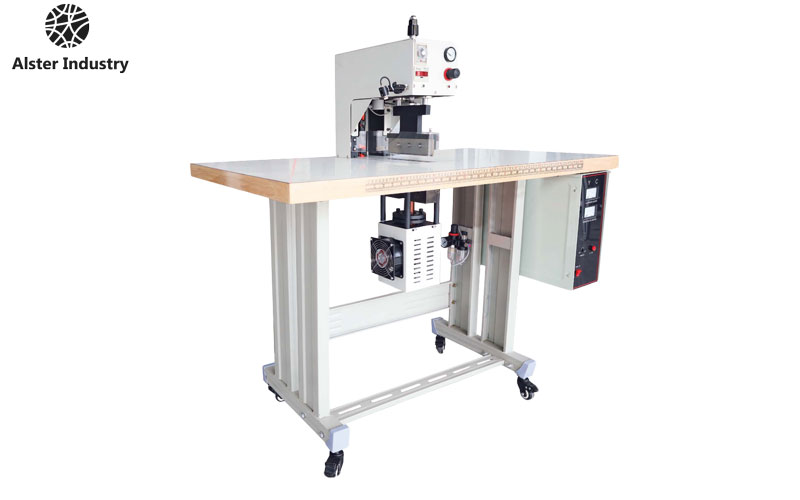In the fast-evolving world of garment manufacturing, innovation plays a crucial role in meeting the demands of modern consumers for comfort, style, and durability. One key area where technology has made a significant leap is in the cutting and finishing of garment components such as plackets — the fabric strips where buttons and buttonholes are placed, commonly seen in polo shirts, dress shirts, and other apparel.
Ultrasonic placket cutting machines have emerged as a revolutionary alternative to traditional cutting and sewing methods. These machines utilize high-frequency ultrasonic vibrations to cut and seal fabrics simultaneously, providing a host of benefits that enhance quality, efficiency, and design flexibility.
In this comprehensive article, we will explore the many advantages of ultrasonic placket cutting machines over traditional methods, examining technical features, production benefits, fabric compatibility, and the future outlook of garment manufacturing technologies.

1. Introduction: The Role of Plackets in Garment Manufacturing
Before diving into the benefits of ultrasonic cutting, it is essential to understand the significance of the placket in garment construction.
A placket is a structural feature of garments, most often a strip of fabric that reinforces openings, allowing buttons and buttonholes to be attached securely. This component is critical in polo shirts, dress shirts, blouses, and some outerwear.
Traditionally, plackets are:
Cut from fabric using manual or mechanical cutters,
Edges finished by sewing or serging to prevent fraying,
Reinforced with interfacing or additional layers,
Sewn onto the garment body with precise alignment.
This process is labor-intensive, time-consuming, and sometimes inconsistent, especially when handling stretch fabrics or delicate materials used in modern apparel.
2. What Is Ultrasonic Placket Cutting?
Ultrasonic placket cutting machines operate by using high-frequency vibrations (typically 20–40 kHz) generated by a transducer to create a cutting blade that vibrates at ultrasonic speeds. When this blade contacts fabric, it produces heat via friction and mechanical energy, which simultaneously:
Cuts the fabric cleanly,
Seals the edges by melting and fusing fibers,
Prevents fraying without additional stitching.
This method is non-contact, fast, and precise, and is particularly suited for synthetic and blended fabrics commonly used in sportswear, seamless clothing, and fashion-forward apparel.
3. Advantages of Ultrasonic Placket Cutting Machines Over Traditional Methods
3.1 Cleaner and More Precise Cuts
Traditional cutting methods such as die-cutting, blade cutting, or scissors are prone to producing raw edges that fray easily, requiring additional sewing or finishing. Ultrasonic cutting machines, by contrast, cut and seal in one operation.
The edges are smooth and sealed, which dramatically reduces the risk of fraying during washing or wear.
The precision of ultrasonic blades allows for complex shapes and narrow widths to be cut cleanly, facilitating innovative design possibilities.
This results in consistent quality across large production runs, reducing rework or rejects.
3.2 Improved Production Efficiency and Speed
By combining cutting and sealing into a single step, ultrasonic placket cutting machines significantly streamline the production workflow.
Reduced process steps: Eliminates the need for sewing edge finishes, saving time.
Faster cutting cycles: Ultrasonic blades can operate continuously at high speed, outperforming manual or mechanical cutters.
Less labor dependency: Automated or semi-automated systems reduce reliance on skilled operators.
Lower downtime: With fewer parts to replace and less machine maintenance, production lines run smoother and longer.
Factories report up to 30–50% faster production when switching from traditional methods to ultrasonic cutting.
3.3 Enhanced Durability of Placket Edges
One of the most notable benefits of ultrasonic cutting is the inherent durability it imparts to fabric edges.
The heat-sealed edge is more resistant to tearing, stretching, or unraveling.
This is especially important in plackets, which undergo frequent stress from buttoning and unbuttoning.
Ultrasonic sealing can outperform sewn edges in long-term durability, extending garment life.
This feature is highly valued in uniforms, sportswear, and children’s apparel, where frequent washing and rugged use are standard.
3.4 Seamless and Lightweight Construction
Ultrasonic placket cutting enables a seamless or reduced-seam garment design, appealing to markets focused on comfort and modern aesthetics.
Eliminates bulky seam allowances traditionally required for stitching.
Reduces garment weight, enhancing wearer comfort, especially in activewear.
Supports thin, stretchable fabrics by avoiding stitch holes that can weaken fabric integrity.
Allows designers to explore sleeker silhouettes and innovative styles.
This aligns well with the growing consumer demand for functional, breathable, and lightweight apparel.
3.5 Greater Fabric Compatibility, Especially with Synthetics and Blends
Many modern fabrics are blends of polyester, nylon, spandex, or other synthetics, which do not behave well under traditional cutting and sewing.
Ultrasonic cutting’s melting/sealing effect works best on thermoplastic fibers, allowing clean edges even on difficult-to-sew fabrics.
Provides consistent results on elastic or laminated textiles without distortion.
Helps preserve fabric stretch and breathability by avoiding needle holes or bulky seams.
Supports cutting of bonded or laminated materials, increasingly used for weatherproof or moisture-wicking garments.
3.6 Environmental and Cost Benefits
Ultrasonic cutting is also more environmentally friendly compared to traditional methods.
Reduces material waste: Cleaner cuts and less trimming.
Eliminates use of sewing threads and chemicals: Less pollution and waste.
Lower energy consumption: Faster processes require less electricity per unit produced.
Longer-lasting garments lead to less frequent replacements, reducing textile waste.
Over time, these advantages contribute to lower production costs and support corporate sustainability goals.
4. Additional Practical Benefits
4.1 Reduced Skill Requirements for Operators
Traditional sewing requires highly trained workers, but ultrasonic cutting machines are largely automated or easy to operate.
Operators can be trained quickly to set parameters and monitor production.
This allows factories to alleviate labor shortages or reduce training costs.
4.2 Versatility for Different Garment Types
While focused here on plackets, ultrasonic cutting is applicable to various garment parts:
Seamless edges on collars, cuffs, waistbands
Decorative cut-outs or laser-like designs
Bonding and cutting in one process for multi-layer textiles
This versatility makes ultrasonic machines a valuable investment beyond just placket cutting.
5. Case Studies and Industry Adoption
Major sportswear and fashion brands increasingly adopt ultrasonic cutting technologies:
A large sportswear manufacturer reported a 40% reduction in production time after implementing ultrasonic placket cutting machines.
Premium polo shirt producers use ultrasonic cutting to achieve cleaner, seamless looks that resonate with high-end consumers.
Factories serving uniform manufacturers cite longer garment life and lower defect rates.
6. Challenges and Considerations
While ultrasonic placket cutting offers many benefits, manufacturers should consider:
Initial investment cost of machines.
Requirement for compatible fabric types; some natural fibers like cotton don’t seal as effectively.
Machine maintenance and parameter tuning to optimize cut quality.
Integration with existing production lines and workflow redesign.
Proper evaluation and pilot testing can mitigate these challenges.
7. Future Trends
The garment industry is moving toward fully automated, smart factories. Ultrasonic cutting machines fit perfectly into this vision by enabling:
Robotic fabric handling
Programmable cutting shapes and sizes
Integration with CAD and pattern-making software
Real-time quality monitoring
As 3D knitting and seamless garment technologies advance, ultrasonic cutting will become a standard tool in next-generation apparel manufacturing.
8. Conclusion
Ultrasonic placket cutting machines represent a transformative innovation in garment production, delivering:
Cleaner, more precise cuts
Enhanced durability and seam strength
Faster, more efficient workflows
Compatibility with modern fabrics
Reduced environmental impact
For manufacturers looking to improve quality, reduce costs, and meet modern consumer demands, ultrasonic technology offers a clear and sustainable advantage over traditional cutting and finishing methods.
Get Started with Ultrasonic Placket Cutting Machines
If you want to stay ahead in the apparel manufacturing industry, consider upgrading to ultrasonic placket cutting technology. Whether you’re producing polo shirts, sportswear, or fashion apparel, these machines will help you create high-quality, durable, and seamless garments that impress customers and outperform competitors.
Contact Alster today for more information on ultrasonic placket cutting machines and how they can be tailored to your production needs.
